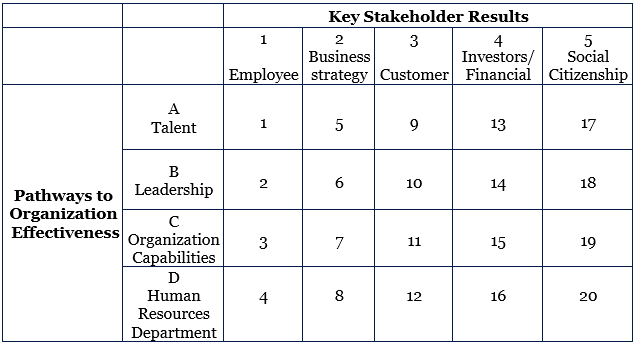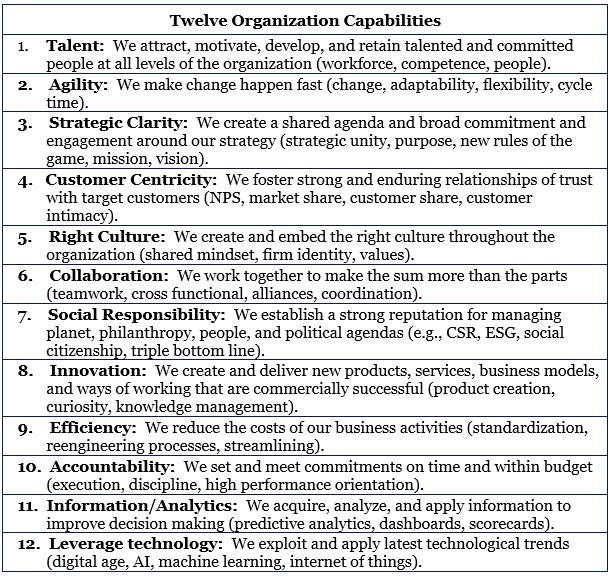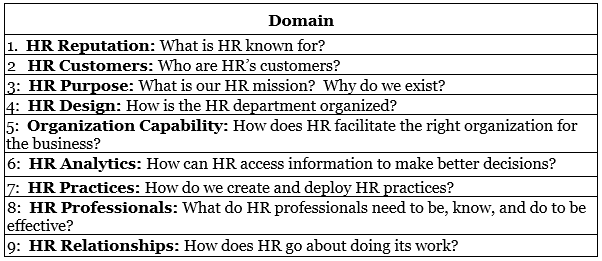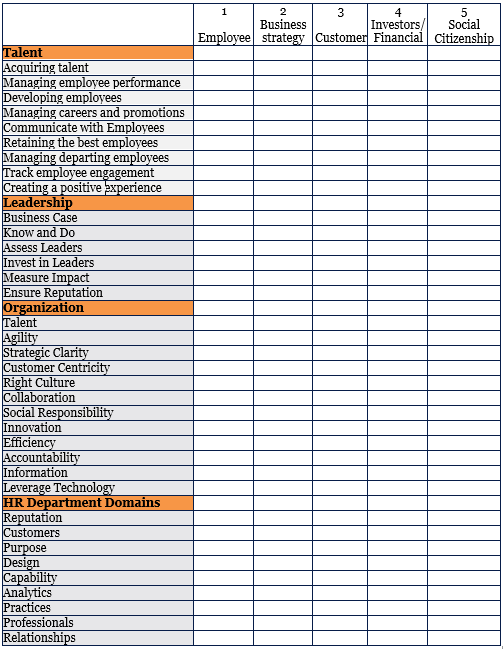How well do you manage your portfolio of HR strategy initiatives?
- 4 Min Read
HR’s opportunity to create value through targeted initiatives in talent, leadership, organization and HR can now be realized thanks to a portfolio approach, argues Dave Ulrich, Norm Smallwood and Alan Todd.
- Author: Dave Ulrich
- Date published: Sep 7, 2020
- Categories

This article on treating human resource strategy initiatives as a portfolio was written by Dave Ulrich, Co-founder of The RBL Group, Norm Smallwood, Co-founder of The RBL Group, and Alan Todd, Founder of CorpU.
Few people doubt that a strong human resource strategy delivers value to key stakeholders both inside (employees, business strategy) and outside (customers, investors, communities) the organization.
To deliver value and results to these five stakeholders, HR professionals provide insights and initiatives (programs, processes, practices) around individual competence (workforce, talent, people), but also about organization capabilities (workplace, culture, and process) and leadership at all levels. In addition, the HR department’s ultimate effectiveness is the extent to which human resource strategy initiatives deliver value to these five key stakeholders.
Combining stakeholder results and HR initiatives creates a simple but informative portfolio grid for how to prioritize and invest in HR initiatives (see Figure 1). The columns in this figure suggest the five stakeholder results that a company may prioritize [1] employee (well being, competence), [2] business strategy (differentiated position, ability to execute), [3] customer (net promoter score), [4] investor/financial (profitability), and [5] social citizenship (environmental, social, governance). Organization effectiveness from HR initiatives may occur along four pathways represented by the four rows: [A] talent,[B] leadership, [C] organization capability, and [d] HR department.
Figure 1: pathways to organization effectiveness

Each of the 20 cells in Figure 1 represents where business or HR leaders could focus initiatives to deliver the five results. Allocating 100 points across these 20 cells describes the portfolio of HR investments that deliver stakeholder results.
Moving towards more precision, based on decades of theory, research, and experience, we have identified specific activities in talent, leadership, organization, and HR department that might deliver the desired results.
Talent Initiatives. In our work on improving talent, we have identified nine possible human resource strategy initiatives that increase competence (e.g., acquiring talent, managing employee performance, development employees, communicating with employees, retaining and removing employees), commitment (tracking employee engagement), and contribution (creating a positive employee experience).
Leadership Initiatives. In our work on Leadership Brand, we have identified six possible initiatives for improving leadership: building a business case, agreeing on what leaders know and do, assessing leaders, investing in leaders, measuring leaders, and ensuring reputation.
Organization Initiatives. In our work on creating the right organization, we have identified 12 key organization capabilities that can be created.

Human resource Strategy Effectiveness. In our work on building more effective HR departments, we have identified nine domains of HR activity, each answering a question about building effective HR:

Using these more detailed initiatives in talent, leadership, organization capability, and HR department, we can create a more thorough HR portfolio with five outcomes (columns) and now 36 initiatives along four pathways rows (see Figure 2).
Figure 2: HR initiatives for organization effectiveness

The initiatives represented by the 180 cells in Figure 2 (5 columns * 36 rows) represents a thorough portfolio of where HR can prioritize and invest to deliver the five key stakeholder results (columns). When we asked business and HR leaders who much they spend per year on initiatives in these 180 cells, they often don’t know specifically, but the numbers are large (e.g., $25 to $40M for firms of $1b up to $150 to $200m for firms over $10B).
Using the portfolio grid in Figure 2 , we can now offer an Organization Guidance System (OGS) to identify which of the 180 cells should receive increased and decreased investment to deliver the five results.
Application of the Organization Guidance System
When we present Figure 2 to senior business and HR leaders, we often get glazed eyes at the enormous complexity of creating organization effectiveness (180 possible cells or initiatives). When we use the portfolio metaphor to describe the importance of selecting and deselecting some cells to invest in, eyes begin to focus. When we highlight, with empirical rigor, which of the 180 cells will deliver key results, eyes open with optimism. This level of portfolio guidance is now accessible because of the abundance of research on leadership, talent, organization, and HR and analytic statistics that ferret out relative impact of specific activities on key outcomes (e.g., variance decomposition).
HR’s opportunity to create value through targeted initiatives in talent, leadership, organization and HR can now be realized. A portfolio approach to HR initiatives will better allocate resources (time, energy, money) to key HR priorities.
The OGS is available to any leader who wants to manage their portfolio of leadership, talent, organization, and HR practices. Visit www.rbl.ai for more info.









